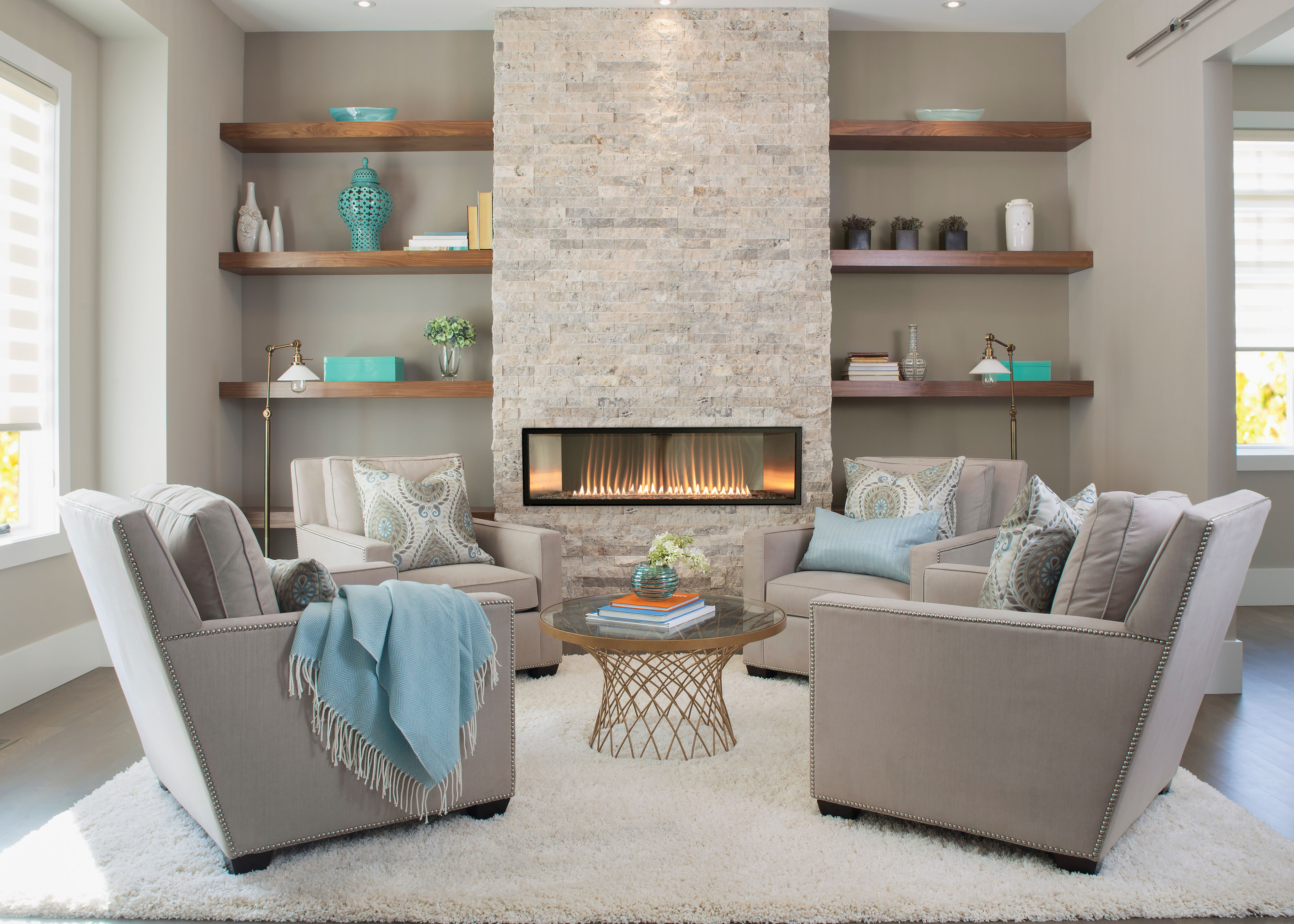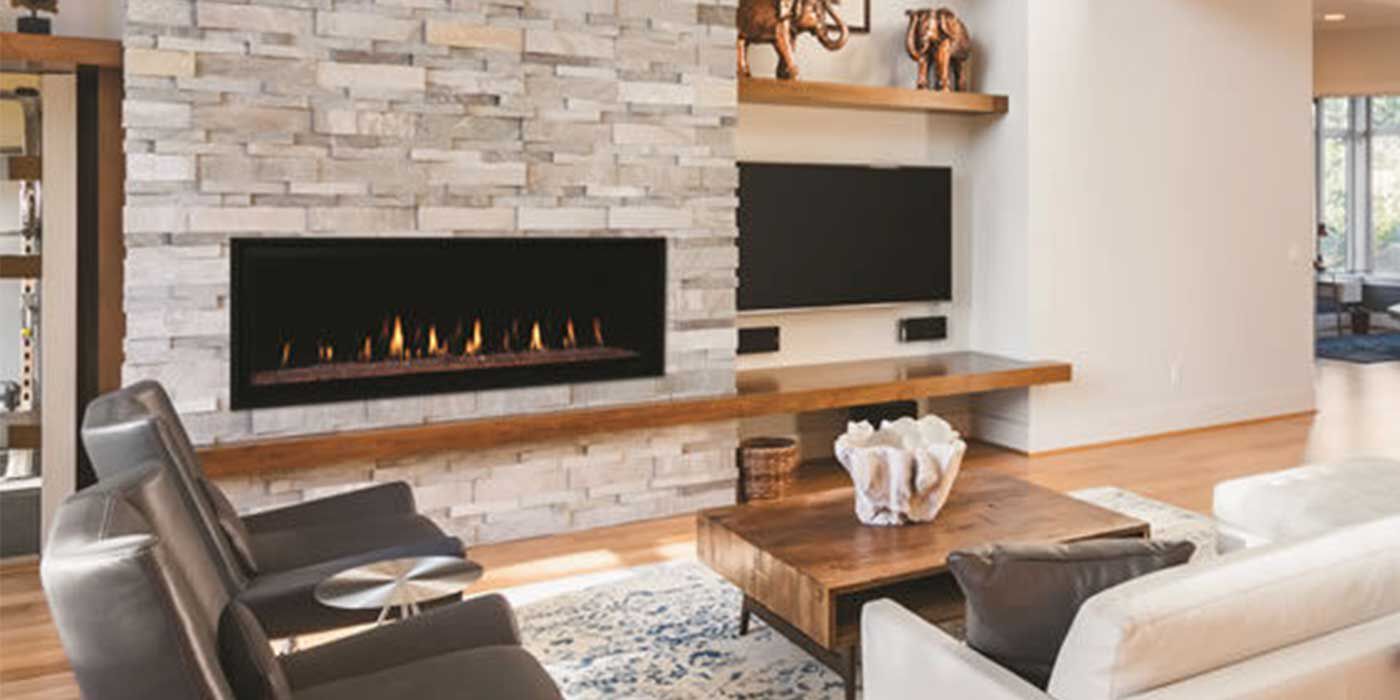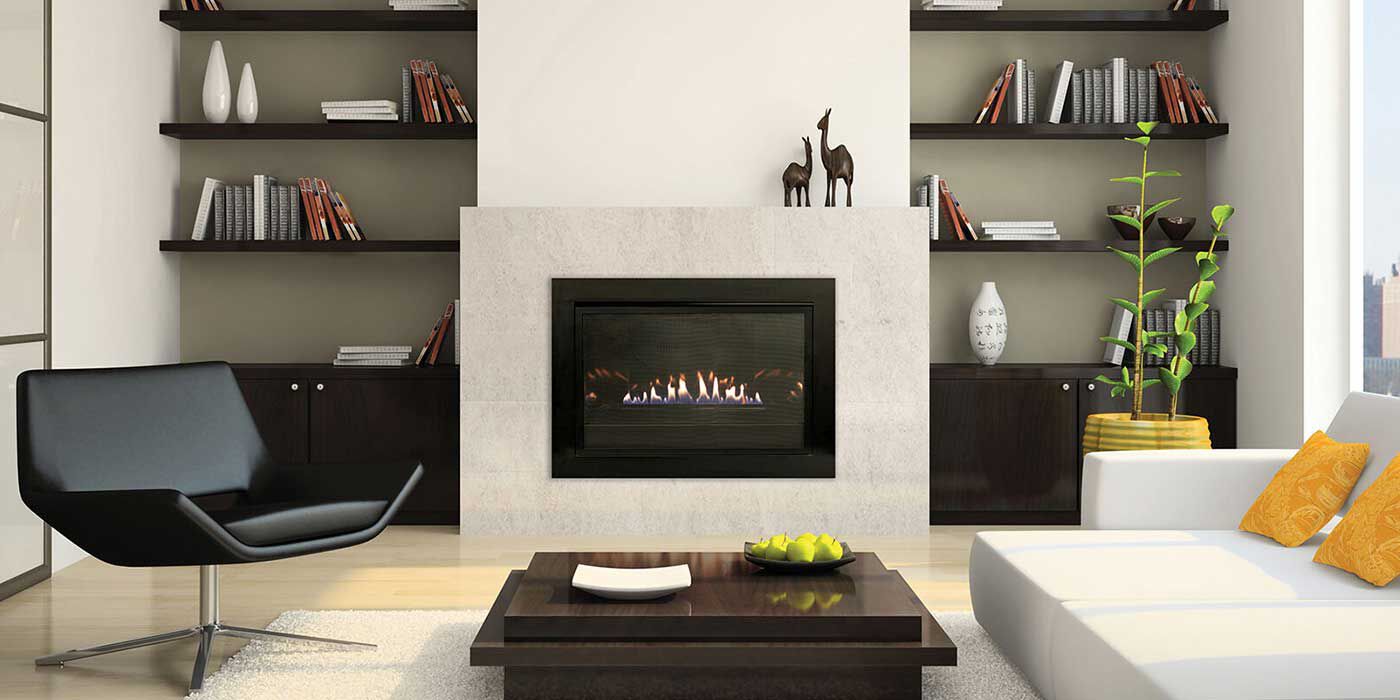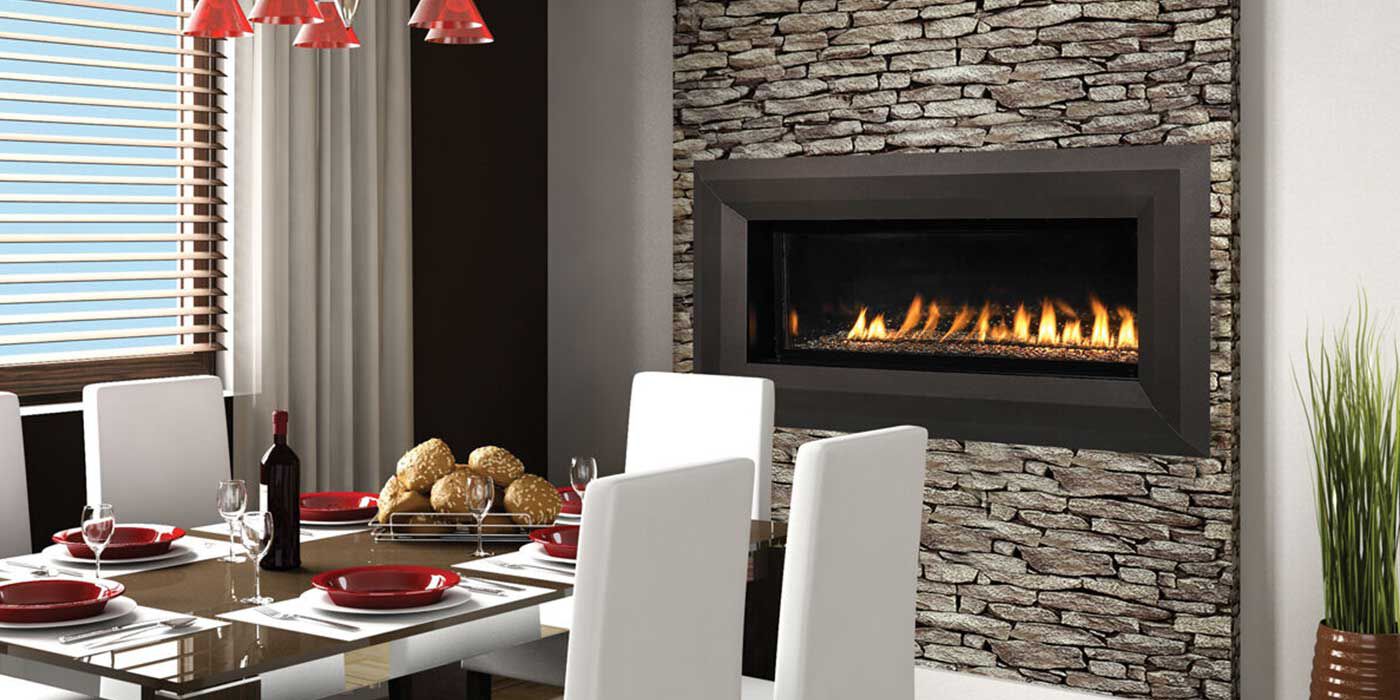By: Tiffany Kurilla, NFI Certified Master Hearth Professional
Last Updated: August 21, 2024
The two main types of gas fireplaces are Direct Vent and Ventless. Direct Vent fireplaces require a venting system while Ventless models are just that — completely vent-free.
Here’s what you need to know to help you decide which type is right for you!
Maintain Your Indoor Air Quality
Direct Vent Gas Fireplaces
If you’re looking for a fireplace that won’t have any interaction with the air inside your home, then a Direct Vent fireplace is the best choice for you.
Direct Vent fireplaces are an excellent way to create a warm and inviting focal point without affecting your indoor air quality.
They use a completely sealed venting system to draw in fresh outside air for combustion while simultaneously exhausting harmful byproducts and combustion gases out of the home.
The front of the firebox is completely sealed off from the interior of the home to allow the venting system to work efficiently while preventing combustion gases from entering the living space.
Direct Vent fireplaces put out a fair amount of heat and operate with up to 85% efficiency. With the addition of a fireplace blower, more heat can be pushed from the firebox out into the living area.
Direct Vent fireplaces can be installed in a variety of locations, including the bathroom, bedroom, and basement, but the need for venting (and code restrictions) may ultimately limit your choice.
Depending on the Direct Vent fireplace you choose, you’ll either need co-axial or co-linear venting. The cost of a full venting system can range anywhere from $200 to $1,500, or higher, depending on the length of the vent run and the pipe needed.
It may also be necessary to cut into a wall or ceiling for installation unless you’re installing the fireplace and venting in an existing masonry chimney.
Overall, Direct Vent fireplaces offer a full flame display and plenty of authentic media bed options. They come in an array of styles and are a great alternative to masonry wood burning fireplaces.
No Venting Required
Ventless Gas Fireplaces
If you’re looking for an affordable heat source, then a Ventless gas fireplace may be your best bet.
Ventless gas fireplaces, also known as Vent-Free fireplaces, are an efficient and economical way to add more heat to your home without the costs associated with a typical fireplace installation.
They don’t require venting, which allows all of the heat produced to stay inside the living space, and offers a lot more flexibility with installation.
Ventless fireplaces work by pulling in indoor air and exhausting it as heat. They are engineered to burn at almost 100% efficiency to ensure no gases are left after combustion. Any residual byproducts that remain will be within safe limits.
Without venting or a chimney to worry about, Ventless fireplaces are often more affordable to install than Direct Vent and Masonry fireplaces.
They can also be installed in non-traditional locations, like the center of a room, with or without sidewalls, and more.
The fact that residual byproducts are able to flow freely into the home makes the safety of Ventless gas fireplaces quite controversial and has led to strict installation requirements.
Ventless appliances can intensify odors already present in the home and the minimal exhaust that remains after combustion may cause irritation to the lungs.
For this reason, it’s not recommended to install a Ventless fireplace if you or someone in your household has allergies, asthma, or chronic bronchitis.
Ventless fireplaces may also increase the level of humidity in your home. As they burn oxygen for combustion, water vapor is produced.
Without venting for the water vapor to escape through, condensation may appear throughout the house and eventually lead to mold and mildew growth.
Cracking a window near the fireplace while it’s in use will allow excess water vapor to escape and prevent moisture build-up.
As a safety precaution, Ventless fireplaces are equipped with an Oxygen Depletion Sensor (ODS) that monitors the oxygen level in the room and will shut off the fireplace if the oxygen supply dips below the safe threshold.
It’s strongly recommended to install carbon monoxide detectors alongside any Vent-free appliance.
Overall, Ventless gas fireplaces are an effective and economical way to boost the heat in your home. The flame display is less intense and not quite as realistic as a Direct Vent fireplace, but what you lose in looks, you make up for in warmth.
Safety First
The most important step in the process of deciding between a Direct Vent and Ventless fireplace is to check your local building and fire codes.
For Ventless gas fireplaces, you’ll need to find out which rooms are approved for installation and what the appropriate room size is to ensure adequate oxygen is present.
Certain states have outlawed indoor installation of Ventless gas fireplaces altogether, while others have strict installation requirements.
Always take the safe route and check your codes!
Our #1 Direct Vent Gas Fireplace
60" Boulevard Linear Fireplace
By Empire
The 60-Inch Boulevard Linear Fireplace by Empire is our top-selling Direct Vent gas fireplace. Our customers love its elegant design, modern functionality, and effective heat output.
The linear design works with practically any space and comes with your choice of liner and media bed, so you can customize the look to match your style.
In-floor LED lighting enhances the media and flames creating a bright and sophisticated focal point.
The Boulevard produces up 46,000 BTUs of heat, depending on the size of the fireplace, and is equipped with a battery back-up in case of a power outage.
A multi-function hand-held remote lets you easily control the burner, accent lighting, and even the optional blower from anywhere in your room.
Our #1 Ventless Gas Fireplace
VRL4543 Linear Fireplace
By Superior
The VRL4543 Linear Fireplace by Superior is our top-selling Ventless gas fireplace for its heating efficiency, programmable heat settings, and open-front linear design. Our customers love the beautiful style, adjustable flames, and convenient controls.
Six flame settings and mood-enhancing interior lighting let you customize the look and feel of the fireplace to meet your needs.
A full-function hand-held remote and electronic ignition system with battery backup makes lighting and controlling the fire effortless.
With a 39,000 BTU heat output and 99% efficiency, the VRL4543 will keep you comfy and cozy all year round while imparting sophistication and style.
Prefer to Listen?
We're Here to Help
Need some help choosing between a Direct Vent or Ventless gas fireplace? We're here for you! Call our NFI certified experts at (800) 919-1904 today.
More Resources
Head over to our Gas Fireplace Buying Guide to learn even more about gas fireplaces!
Is it safe to hang a TV over your fireplace? Here’s what you need to know!
What's so great about gas logs? Check out the Top 6 Advantages of Gas Logs to find out!
 |
Tiffany Kurilla, Technical Sales Representative, has five years of experience at Woodland Direct. As an NFI-Certified Master Hearth Professional, she’s recognized for her deep knowledge of fireplace products and safety standards. Tiffany’s dedication and mastery earned her the title of Woodland’s top sales representative in 2021 and 2022. Outside of work, Tiffany is an avid traveler, exploring national and international destinations. Her favorite spot to visit? The Happiest Place on Earth — Disney World! Call Tiffany or one of our experts in fire at 800.919.1904. |






